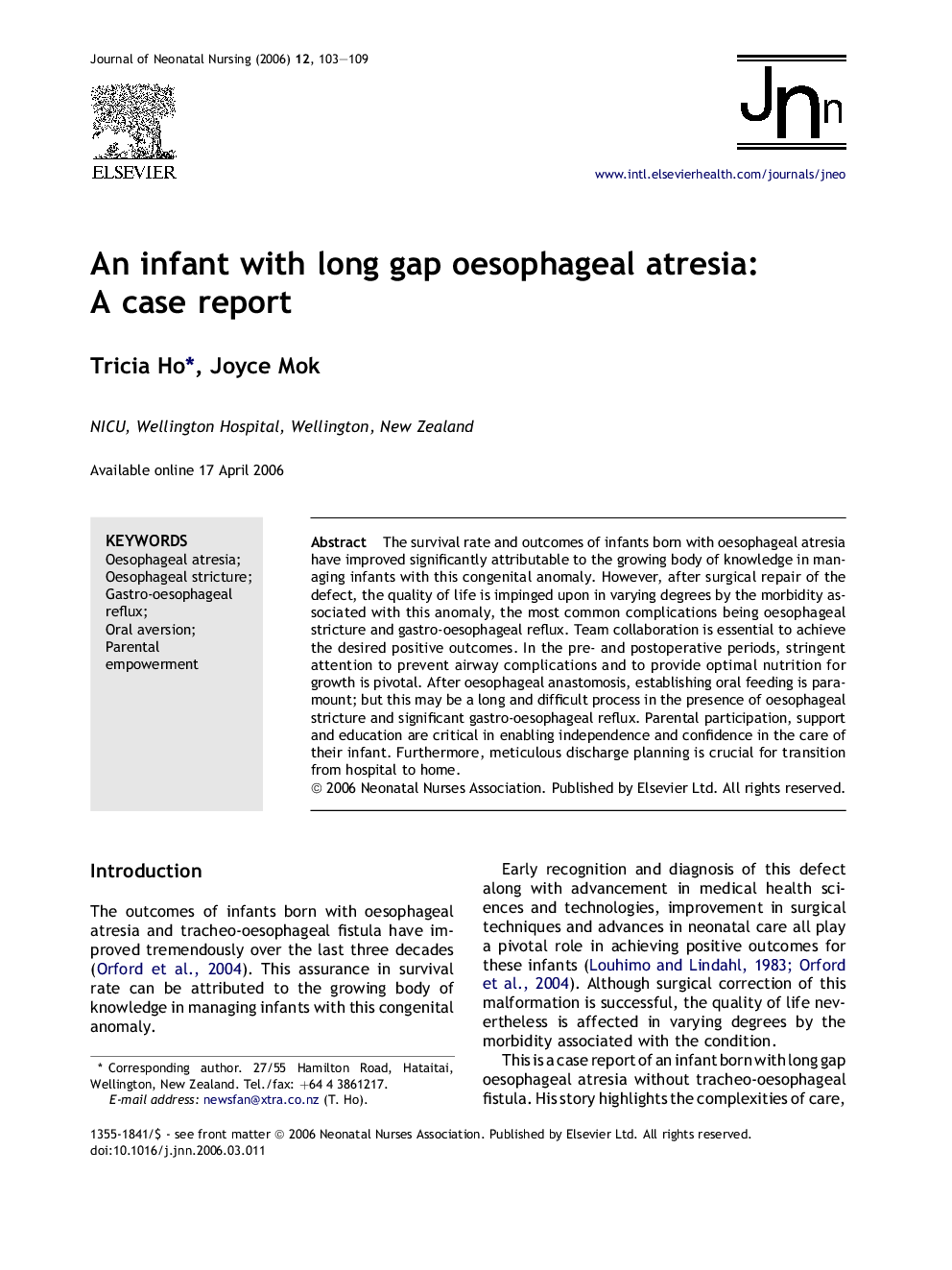| Article ID | Journal | Published Year | Pages | File Type |
|---|---|---|---|---|
| 2632064 | Journal of Neonatal Nursing | 2006 | 7 Pages |
The survival rate and outcomes of infants born with oesophageal atresia have improved significantly attributable to the growing body of knowledge in managing infants with this congenital anomaly. However, after surgical repair of the defect, the quality of life is impinged upon in varying degrees by the morbidity associated with this anomaly, the most common complications being oesophageal stricture and gastro-oesophageal reflux. Team collaboration is essential to achieve the desired positive outcomes. In the pre- and postoperative periods, stringent attention to prevent airway complications and to provide optimal nutrition for growth is pivotal. After oesophageal anastomosis, establishing oral feeding is paramount; but this may be a long and difficult process in the presence of oesophageal stricture and significant gastro-oesophageal reflux. Parental participation, support and education are critical in enabling independence and confidence in the care of their infant. Furthermore, meticulous discharge planning is crucial for transition from hospital to home.
